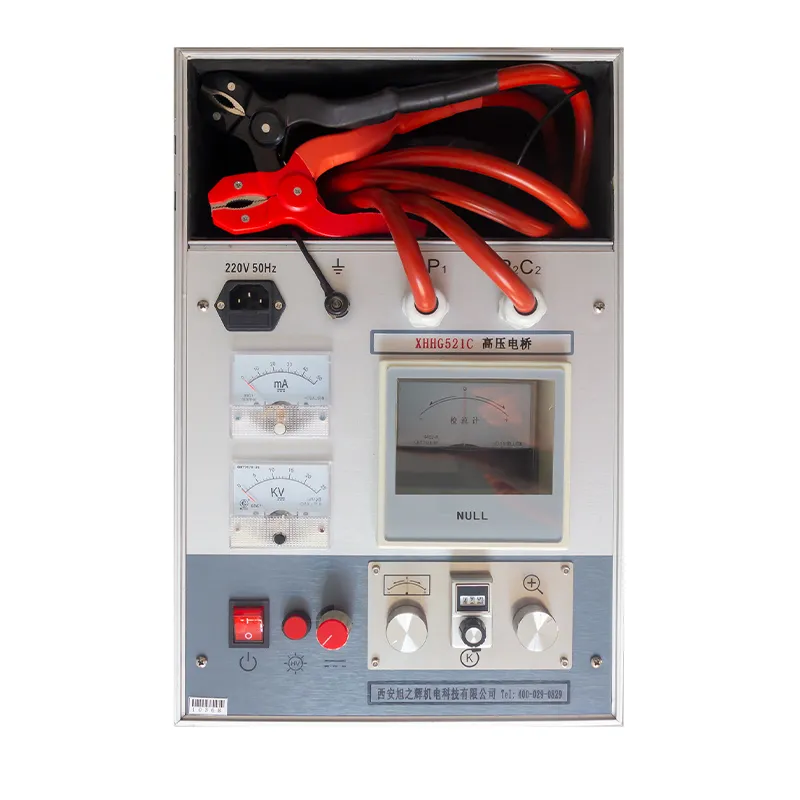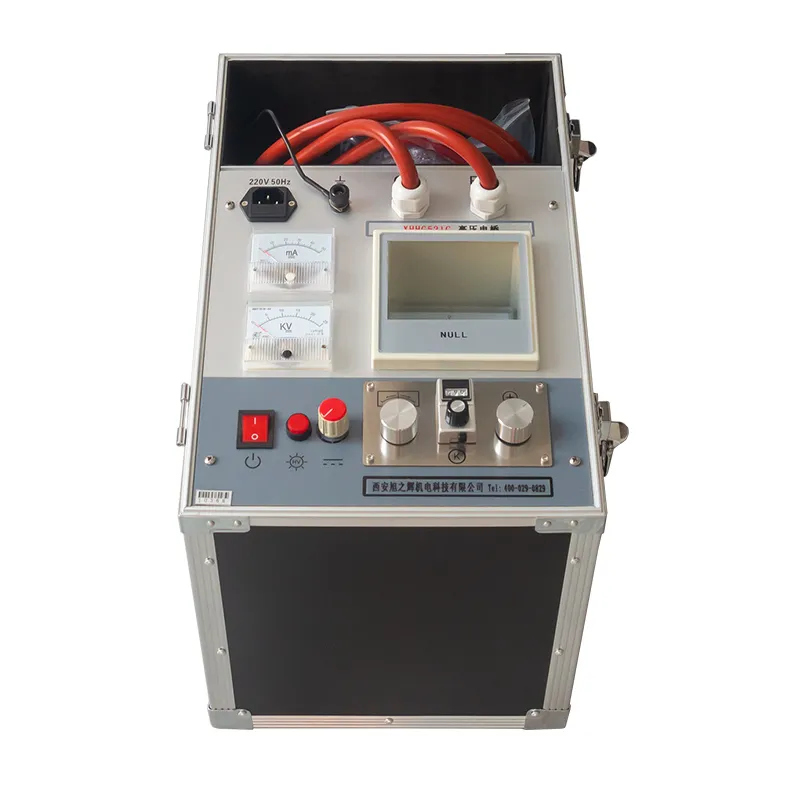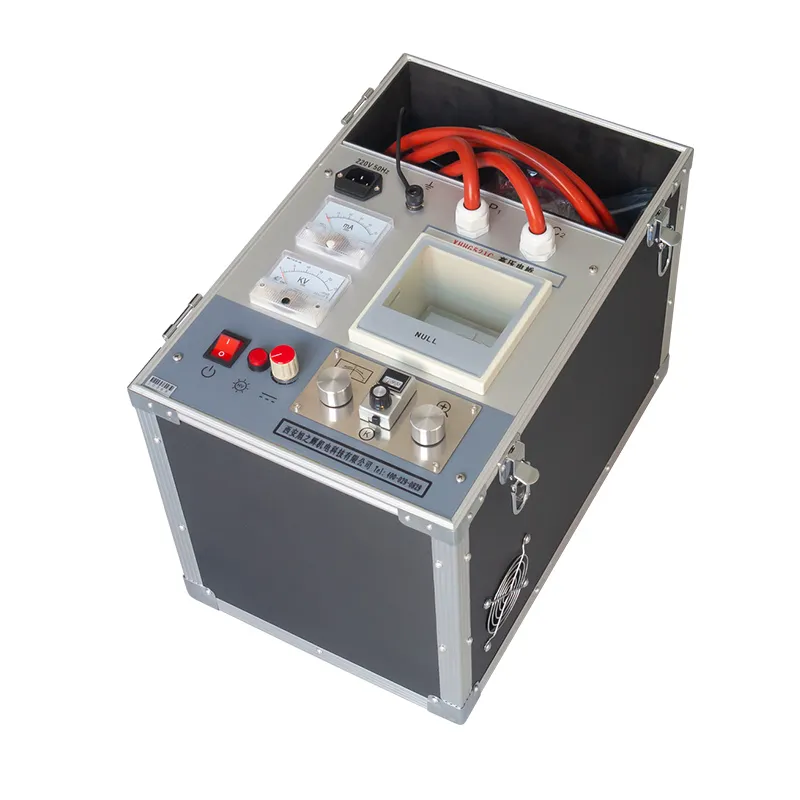Q: What principle does the high-voltage bridge cable fault locator utilize?
A: The high-voltage bridge cable fault locator utilizes the MURRAY bridge principle to accurately locate breakdown points and low-insulation-resistance defect points in wires and cables post-laying, and it is also effective for identifying defect points in cable manufacturing facilities.
Q: In what applications is it particularly effective?
A: It is specifically designed to identify breakdown points in various laid wires and cables, as well as defect points with low insulation resistance, even those that have not broken down. It is also applicable in cable factories to locate cable defects.
Q: Can you elaborate on the components of the equipment?
A: The equipment employs a switching power supply to generate a high-voltage constant current source, characterized by a no-load voltage of 15KV and a short-circuit current of 50mA. A high-sensitivity amplifier and galvanometer provide precise balance indication, while a proportional potentiometer forms the balance bridge. The entire system is placed at a high potential, with a specially designed double-core high-voltage rubber measurement cable that utilizes the four-terminal resistance measurement method to mitigate errors caused by lead resistance. The cable’s braided shielding layer ensures reliable grounding. For operational safety, the control panel’s operation button is situated at a low potential, and the bridge is manipulated using an insulating rod. The high-voltage constant current source and bridge are housed in a portable aluminum alloy case.
Q: What are the key advantages of the bridge balance method over other methods?
A: When compared to the wave reflection method, the bridge balance method is devoid of blind areas and is particularly advantageous for pinpointing breakdown points in short cables and near cable terminations, with the added benefit of easy operation.
The output voltage is adjustable;
The shock frequency is adjustable;
With overcurrent protection;
There is no blind spot in the test range;
Signal frequency adjustment;
Zero protection.
High-voltage bridges are particularly suitable for
1. The high-resistance breakdown point of the cable after laying, especially the linear high-resistance breakdown point that is difficult to burn low-resistance, such as the linear high-resistance breakdown of the cable intermediate joint.
2. Flashover type breakdown point. After the breakdown, the constant current source can maintain the arc, a stable current flows through the bridge, and the bridge has sufficient sensitivity.
3. The defect points that have not yet broken down but have low resistance, such as the insulation defect points that have low resistance value of the cable but do not break down under the operating voltage are found by using a megohmmeter.
 Due to the above characteristics, high-voltage high-voltage bridges are especially suitable for the following users:
Due to the above characteristics, high-voltage high-voltage bridges are especially suitable for the following users:
Teams engaged in professional positioning: such as cable repair and trial classes for large and medium-sized power supply bureaus and large-scale electricity enterprises. Most of the cable breakdown points can be quickly found with a high-voltage bridge to find the approximate breakdown location. It can be used in conjunction with the wave reflection method and the fixed point meter to learn from each other's strengths and make the positioning faster and more reliable.
1. Small users: such as small power supply bureaus and medium-sized electricity enterprises. There are not many cables, the general direction is clear, the instrument is not located, the price is high, and the quality and experience of the user are required to be high, so it is not the best choice. It is a better way to choose this device, which is easy to operate and can meet daily needs.
2. Cable production plant: In the factory, it can be used to locate the breakdown point of various cables, and a digital capacitance meter can be selected to find out the disconnection point. The device is light in weight and easy to carry to the field for positioning services for cable users.
| No load voltage |
≤15KV |
| Short circuit current |
≤100mA |
| Positioning accuracy |
±(0.1%·L±1)M |
| Weight |
16 kg |
| Power supply |
AC 220 and 9V battery |

 Ihre Nachricht muss zwischen 20 und 3.000 Zeichen enthalten!
Ihre Nachricht muss zwischen 20 und 3.000 Zeichen enthalten! Bitte überprüfen Sie Ihre E-Mail!
Bitte überprüfen Sie Ihre E-Mail!  Ihre Nachricht muss zwischen 20 und 3.000 Zeichen enthalten!
Ihre Nachricht muss zwischen 20 und 3.000 Zeichen enthalten! Bitte überprüfen Sie Ihre E-Mail!
Bitte überprüfen Sie Ihre E-Mail! 
 Due to the above characteristics, high-voltage high-voltage bridges are especially suitable for the following users:
Due to the above characteristics, high-voltage high-voltage bridges are especially suitable for the following users:
